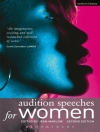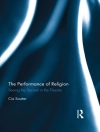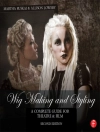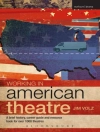Like many Eastern European countries, Poland has seen a succession of divergent economic and political regimes over the last century, from prewar “embedded liberalism, ” through the state socialism of the Soviet era, to the present neoliberal moment. Its cinema has been inflected by these changing historical circumstances, both mirroring and resisting them. This volume is the first to analyze the entirety of the nation’s film history—from the reemergence of an independent Poland in 1918 to the present day—through the lenses of political economy and social class, showing how Polish cinema documented ordinary life while bearing the hallmarks of specific ideologies.
Содержание
List of Illustrations
Acknowledgments
Introduction
PART I: INTERWAR CINEMA: STRIVING FOR SOCIAL PROMOTION
Chapter 1. The 1920s: The Cult of the Body and the Machine
Chapter 2. The 1930s: The Beauty and Sadness of the Room at the Top
PART II: THE CINEMA IN PEOPLE’S POLAND: TAKING A GREAT LEAP
Chapter 3. The 1950s: Holy Work?
Chapter 4. The 1960s: Industrial Expansion and Small Stabilization
Chapter 5. The 1970s: Bad Work and Good Life
Chapter 6. The 1980s: Between Refusal to Work and Alienation of Labour
PART III: POSTCOMMUNIST CINEMA: FROM TRIUMPHANT NEOLIBERALISM TO ACCUMULATION BY DISPOSSESSION
Chapter 7. The 1990s: Heroic Neoliberalism or Everybody Can Be a Winner
Chapter 8. The 2000s and Beyond: Accumulation by Dispossession
Bibliography
Index
Об авторе
Ewa Mazierska is Professor of Film Studies at the University of Central Lancashire. She has published over twenty books on film and popular music, including From Self-Fulfillment to Survival of the Fittest: Work in European Cinema from the 1960s to the Present (2015), Marxism and Film Activism (2015), and European Cinema and Intertextuality: History, Memory, Politics (2011). She is principal editor of the journal Studies in Eastern European Cinema.












